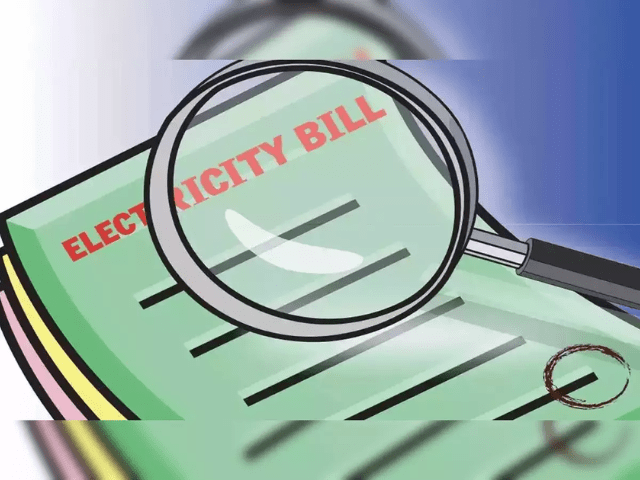H2: Introduction: Anticipating the US Fed’s Strategic Move in December
The US Federal Reserve is preparing for a significant policy decision this week, with experts expecting a quarter-percentage-point cut in interest rates. This rate adjustment comes amid the Fed’s evolving response to economic conditions and inflation, reflecting a shift toward a more cautious stance while balancing the broader economic landscape. While some market analysts refer to this as a “hawkish cut,” it signals the Fed’s approach to a period of economic uncertainty, particularly with the upcoming leadership transition to President-elect Donald Trump.
H2: The Expected Rate Cut: What’s Behind the Decision?
The US Federal Reserve’s anticipated move will reduce its benchmark policy rate to the 4.25% to 4.50% range. This would mark a full percentage point below the rate established in September, when the central bank began easing its tight monetary policy aimed at curbing the inflation surge that began in 2021. The current economic context, including strong consumer spending and still-high inflation, complicates predictions for the Fed’s next steps.
H3: The Uncertainty Around Future Rate Reductions
The path ahead for the Fed is becoming increasingly uncertain. Inflation, which remains above the Fed’s 2% target, continues to be a key factor influencing the Fed’s actions. At the same time, the economy is growing faster than initially expected, which may prompt the Fed to reconsider the pace of future rate cuts. Furthermore, President-elect Donald Trump’s forthcoming policies on tariffs, taxes, and immigration could lead to changes that disrupt economic projections, creating additional challenges for the central bank.
H3: Fed’s September Forecasts: A Snapshot of Economic Expectations
In its September projections, the Federal Reserve forecasted an additional 1% cut in its benchmark rate by the end of 2025. The expected cut would place the rate around 3.4% by 2025, but economic conditions have shifted since then. With inflation still hovering above the 2% target and a stronger-than-expected economy, investors now predict that the Fed will take a more gradual approach to rate cuts in 2025.
H2: Market Reactions and Investor Expectations: A More Cautious Fed?
Since the September meeting, several indicators have influenced expectations for the Fed’s rate policy. Notably, the November retail sales report showed resilience in consumer spending, signaling a robust economy. This, coupled with inflation data that has yet to show a definitive downward trend, has led many to predict that the Fed will slow the pace of its rate cuts.
H3: Will the Fed Ease Further in 2025?
Economists at TD Securities suggest that while the Fed remains focused on reducing interest rates over the next year, its guidance on the pace of those reductions will be more measured. The Federal Reserve is likely to show more caution in 2025 due to the complex mix of inflationary pressures and strong economic growth. A balanced approach will be necessary to avoid any potential overheating of the economy while still addressing inflation.
H3: The Importance of Fed Chair Jerome Powell’s Remarks
As part of the December policy meeting, Fed Chair Jerome Powell will deliver remarks during a post-meeting press conference. His words will be closely scrutinized by analysts, economists, and investors, who will be looking for clues about the central bank’s outlook on rate cuts and its assessment of the economy. Many expect Powell to emphasize a cautious, data-driven approach, while signaling the possibility of slowing the pace of rate cuts in response to stronger-than-expected economic performance.
H2: Economic Conditions: A Snapshot of the US Economy in Late 2024
The US economy continues to display strength, with solid growth and a low unemployment rate. However, inflation, while falling, remains elevated compared to historical norms. The Federal Reserve’s policy statement in December is expected to reiterate the central bank’s concerns about inflation and its commitment to bringing it down to target levels over time.
H3: The Federal Reserve’s Decision-Making Process: Key Drivers
When deciding on interest rate adjustments, the Federal Reserve weighs several key factors:
- Inflation Trends: The Fed’s primary concern is bringing inflation back to its 2% target, which requires careful management of interest rates.
- Economic Growth: While the economy remains strong, the Fed is mindful of avoiding over-tightening, which could stifle growth.
- Labor Market Conditions: Unemployment rates remain low, which is positive for the economy, but the Fed will consider whether labor market conditions are sustainable in the long term.
- Global Factors: External factors, such as geopolitical risks and international trade, also play a role in the Fed’s decision-making process.
H3: A “Hawkish Cut”: What Does It Mean?
A “hawkish cut” refers to the Federal Reserve’s decision to lower rates while maintaining a more conservative stance on future rate reductions. In this context, it signals that while the Fed is willing to ease monetary policy slightly, it remains cautious about further rate cuts, given the economic uncertainties at play.
H2: President-elect Trump’s Impact on the Fed’s Decisions
With President-elect Donald Trump set to take office in January 2025, his policies on taxation, tariffs, and immigration will add an element of unpredictability to economic forecasts. The Fed is expected to take a wait-and-see approach in the early months of 2025, as Trump’s policies take shape and their impact on the economy becomes clearer.
H3: The Fed’s December Meeting and Projections
The Federal Reserve will release its updated projections alongside the policy statement on Wednesday. These projections will include economic forecasts for 2025, which are likely to reflect the Fed’s expectations for moderate growth and inflation. The outlook for the benchmark interest rate is expected to be adjusted in response to recent data, with a focus on managing inflation and maintaining economic stability.
H2: What to Expect in 2025: A Year of Economic Transition
As we look ahead to 2025, the Fed’s actions will be shaped by several key developments, including the outcome of the presidential transition and ongoing efforts to address inflation. While there are still risks to the economy, the Fed is likely to take a more measured approach to interest rate cuts, prioritizing stability and gradual adjustments.
FAQs:
Q1: What is the Federal Reserve’s expected rate cut in December 2024? The Federal Reserve is expected to cut the benchmark policy rate by a quarter-percentage point to a range of 4.25% to 4.50% in December 2024.
Q2: Why is the Fed’s interest rate cut considered “hawkish”? The Fed’s rate cut is termed “hawkish” because it suggests a cautious approach to future rate reductions, despite current economic conditions that might warrant further cuts.
Q3: What role does inflation play in the Fed’s decision-making process? Inflation is a critical factor in the Fed’s decisions, as its primary goal is to bring inflation back to the 2% target while ensuring economic growth.
Q4: How does the US economy affect the Fed’s interest rate decisions? The Fed’s decisions are influenced by the strength of the US economy, including factors such as economic growth, unemployment, and consumer spending.
Q5: How will President-elect Donald Trump’s policies impact the Federal Reserve’s decisions? Trump’s policies on taxation, tariffs, and immigration will introduce uncertainty, and the Fed is expected to take a wait-and-see approach to gauge their impact on the economy.
SEE ALSO
https://flarenews.pk/2024/12/18/govt-internet-challenges-amid-ppp-criticism/


